 W
WIsraeli composer Paul Ben-Haim's Symphony no. 1 is the first Eretz-Israel symphony and one of the most important works in the history of classical music in Israel.
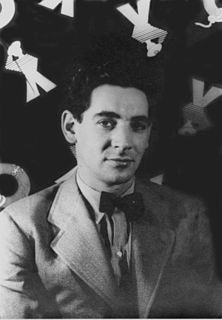 W
WLeonard Bernstein's Symphony No. 1 Jeremiah was composed in 1942. Jeremiah is a programmatic work, following the Biblical story of the prophet Jeremiah. The third movement uses texts from the Book of Lamentations in the Hebrew Bible, sung by a mezzo-soprano. The work won the New York Music Critics' Circle Award for the best American work of 1944.
 W
WLeonard Bernstein's Symphony No. 2 The Age of Anxiety is a piece for orchestra and solo piano. The piece was composed from 1948 to 1949 in the US and Israel, and was revised in 1965. It is titled after W. H. Auden's poem of the same name, and dedicated to Serge Koussevitzky.
 W
WSymphony No. 3 "Kaddish" is a programmatic choral symphony by Leonard Bernstein, published in 1963. It is a dramatic work written for a large orchestra, a full choir, a boys' choir, a soprano soloist and a narrator. "Kaddish" refers to the Jewish prayer that is chanted at every synagogue service for the dead but never mentions "death."
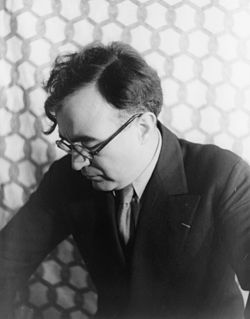 W
WSinfonía india is Carlos Chávez's Symphony No. 2, composed in 1935–36. In a single movement, its sections nevertheless follow the traditional pattern for a three-movement symphony. The title signifies the fact that the thematic material consists of three melodies originating from native-American tribes of northern Mexico. The symphony is Chávez's most popular composition.
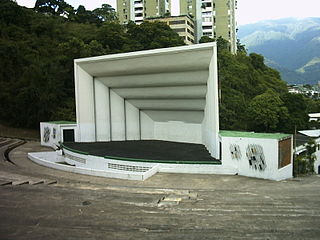 W
WThe Symphony No. 3 by Carlos Chávez was composed in 1951–54 on a commission from Clare Boothe Luce, and is dedicated to the memory of her daughter, Anne Clare Brokaw.
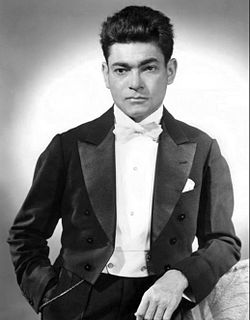 W
WSymphony No. 5, also called Sinfonía para cuerdas is a composition for string orchestra by Carlos Chávez, composed in 1953.
 W
WSymphony No. 6 is an orchestral work by Carlos Chávez, composed in 1961–62.
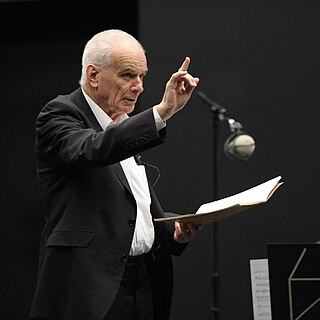 W
WThe Symphony No. 1 by Peter Maxwell Davies was composed between 1973 and 1976, and is dedicated to Sir William Glock, "as a mark of friendship and of appreciation of his work for contemporary music in his years as music controller at the B.B.C.". It was commissioned by the Philharmonia Orchestra, which gave the premiere of the symphony at the Royal Festival Hall, London, on 2 February 1978, with Simon Rattle conducting.
 W
WThe Symphony No. 2 by Peter Maxwell Davies was commissioned by the Boston Symphony Orchestra in celebration of its centenary, and was composed in 1980. Seiji Ozawa conducted the world premiere with the BSO on 26 February 1981 at Symphony Hall, Boston.
 W
WThe Symphony No. 3 by Peter Maxwell Davies was composed in 1984 on a commission from the BBC Philharmonic, who gave the world premiere on 19 February 1985, at the Free Trade Hall in Manchester, with Edward Downes conducting.
 W
WThe Symphony No. 4 by Peter Maxwell Davies was commissioned for the Scottish Chamber Orchestra by Christian Salvesen plc and composed in 1989. It is dedicated to the memory of the violinist John Tunnell, who had been leader of the orchestra, and was premiered at the Royal Albert Hall on a BBC Promenade Concert on 10 September 1989, with the composer conducting the Scottish Chamber Orchestra.
 W
WThe Symphony No. 5 was composed by Peter Maxwell Davies in 1994 on commission from the Philharmonia Orchestra, who gave the world premiere under the composer’s direction at a BBC Promenade concert on 9 August 1994, at the Royal Albert Hall in London.
 W
WThe Symphony No. 6 by Peter Maxwell Davies was composed in Hoy during the first half of 1996, and was premiered on 22 June of the same year in the Phoenix Cinema, Kirkwall, as part of the twentieth St Magnus Festival, Orkney, by the Royal Philharmonic Orchestra conducted by the composer. The work was written with specific members of the RPO in mind, and is dedicated to the memory of the poet George Mackay Brown, who died on the day the symphony was completed.
 W
WThe Symphony No. 7 by Peter Maxwell Davies was composed in 2000. It was written for and dedicated to the BBC Philharmonic Orchestra, by whom it was premiered on 19 June 2000 at the St Magnus Festival, in the Pickaquoy Centre, Kirkwall, Orkney, conducted by the composer.
 W
WSymphony No. 1 "The Lord of the Rings" is the first symphony for concert band written by Johan de Meij. It premiered in 1988 with the Groot Harmonieorkest van de Belgische Gidsen conducted by Norbert Nozy. The symphony is based on literary themes from the novel by J.R.R. Tolkien.
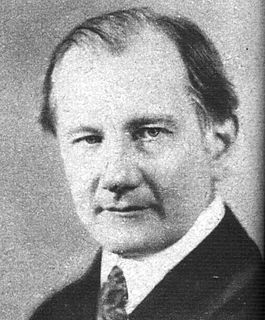 W
WThe Symphony No. 2 in E, Op. 40, was completed by Ernő Dohnányi in 1944, at the close of the Second World War. It was revised later in the 1950s. Written with audible roots in the Romantic tradition, the work is largely lyrical, yet maintains a controlled militaristic air inspired by the events surrounding its composition. It references a variety of musical backgrounds, including the work of Brahms, Wagner, Kabalevsky, and Bach. Bach's song Komm, süßer Tod serves as the basis for a significant portion of the finale.
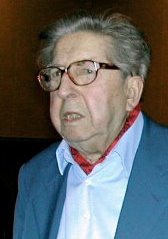 W
WHenri Dutilleux's Symphony No. 2 Le Double is an orchestral work completed in 1959, commissioned by the Koussevitzky Music Foundation for the 75th anniversary of the Boston Symphony Orchestra. It is written for an orchestra and a second group comprising an oboe, a clarinet, a bassoon, a trumpet, a trombone, two violins, a viola, a cello, a harpsichord, a celesta, and timpani.
 W
WSir Edward Elgar's Symphony No. 1 in A♭ major, Op. 55 is one of his two completed symphonies. The first performance was given by the Hallé Orchestra conducted by Hans Richter in Manchester, England, on 3 December 1908. It was widely known that Elgar had been planning a symphony for more than ten years, and the announcement that he had finally completed it aroused enormous interest. The critical reception was enthusiastic, and the public response unprecedented. The symphony achieved what The Musical Times described as "immediate and phenomenal success", with a hundred performances in Britain, continental Europe and America within just over a year of its première.
 W
WSir Edward Elgar's Symphony No. 2 in E♭ major, Op. 63, was completed on 28 February 1911 and was premiered at the London Musical Festival at the Queen's Hall by the Queen's Hall Orchestra on 24 May 1911 with the composer conducting. The work, which Elgar called "the passionate pilgrimage of the soul", was his last completed symphony; the composition of his Symphony No. 3, begun in 1933, was cut short by his death in 1934.
 W
WSymphony No. 1, Op. 13, in E♭ by the Romanian composer George Enescu reflects the composer's training in both Vienna and Paris. In the former location he studied the Brahmsian tradition with Robert Fuchs, and in the latter the French tradition with Jules Massenet and Gabriel Fauré.
 W
WSymphony No. 2, Op. 17, in A major by the Romanian composer George Enescu was written in 1912–14. A performance lasts about 55 minutes.
 W
WThe Symphony No. 3, Op. 21, in C major is a large-scale orchestral-vocal composition by the Romanian composer George Enescu, written in 1916–18.
 W
WThe Symphony No. 4 in E minor is an orchestral composition by the Romanian composer George Enescu, left incomplete at the composer's death, but finished in 1996 by Pascal Bentoiu.
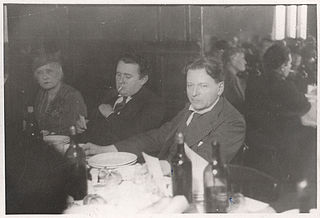 W
WThe Symphony No. 5, in D major is a large-scale composition for orchestra, tenor soloist, and female choir by the Romanian composer George Enescu, using a text by the Romanian poet Mihai Eminescu. Drafted in 1941 and partially orchestrated at some later date, the symphony was left unfinished at Enescu's death, but has been completed posthumously, first partially by Cornel Țăranu in 1970–72 and 1990, then in complete form by Pascal Bentoiu in 1995.
 W
WThe Symphony No. 3, Op. 36, also known as the Symphony of Sorrowful Songs, is a symphony in three movements composed by Henryk Górecki in Katowice, Poland, between October and December 1976. The work is indicative of the transition between Górecki's dissonant earlier manner and his more tonal later style and "represented a stylistic breakthrough: austerely plaintive, emotionally direct and steeped in medieval modes." It was premièred on 4 April 1977, at the Royan International Festival, with Stefania Woytowicz as soprano and Ernest Bour as conductor.
 W
WSymphony: Mathis der Maler is among the most famous orchestral works of German composer Paul Hindemith. Music from the symphony was incorporated into, or reworked for, Hindemith's opera Mathis der Maler, which concerns the painter Matthias Grünewald.
 W
WTitanic Symphony, the third symphony composed by Richard Kastle, is based on the sinking of the RMS Titanic. It is a four-movement piece for orchestra that begins with the ship leaving the dock on her maiden voyage. Its last movement describes the ship's sinking. Because Kastle felt the sea's rhythm was vital to the piece's creation, he composed it on Venice Beach, where he lived in the late 1980s.
 W
WThe Symphony No. 2 in E minor, is one of the Armenian composer Aram Khachaturian's most well-known pieces of music. Completed in 1944, it was nicknamed The Bell or Symphony with Bells by Georgi Khubov for its bell motif that begins and ends the piece. A typical performance lasts about 50 minutes.
 W
WThe Symphony No. 2 by the Polish composer Witold Lutosławski is an orchestral composition in two movements written between 1965 and 1967. The work exhibits Lutosławski's technique of "limited aleatoricism", where the individual instrumental parts are notated exactly, but their precise co-ordination is organised using controlled elements of chance.
 W
WWitold Lutosławski wrote his Symphony No. 3 in 1973–1983. The Chicago Symphony Orchestra, conducted by Georg Solti, gave the world premiere on 29 September 1983. The work is dedicated to Solti and the Chicago Symphony Orchestra. It was awarded the Nagroda Solidarności in 1984 and selected for the first Grawemeyer Award for Music Composition in 1985.
 W
WThe Turangalîla-Symphonie is a large-scale piece of orchestral music by Olivier Messiaen (1908–92). It was written from 1946 to 1948 on a commission by Serge Koussevitzky for the Boston Symphony Orchestra.
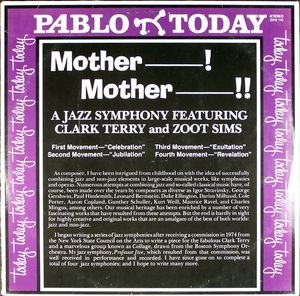 W
WMother______! Mother______!! is a 1980 album by Clark Terry featuring Zoot Sims, of a jazz symphony composed by Charles Schwartz. Terry and Sims are accompanied on the album by an octet, the Contemporary Chamber Ensemble and the soprano Joan Heller.
 W
WSymphony No. 1 "Polyphonic" is the first symphony by Estonian composer Arvo Pärt. The symphony was written in 1963. It is dedicated to Estonian composer Heino Eller.
 W
WSymphony No. 2 is the second symphony by Estonian composer Arvo Pärt, written in 1966.
 W
WArvo Pärt composed his Third Symphony in 1971. It is scored for symphony orchestra and was dedicated to Neeme Järvi.
 W
WThe Symphony No. 2 in E minor, Op. 27, is a symphony by the Russian composer Sergei Rachmaninoff, written in 1906–07. The premiere was conducted by the composer himself in Saint Petersburg on 26 January 1908, and a week later in Moscow. Its duration is approximately 60 minutes when performed uncut; cut performances can be as short as 35 minutes. The score is dedicated to Sergei Taneyev, a Russian composer, teacher, theorist, author, and pupil of Pyotr Ilyich Tchaikovsky. Alongside his Prelude in C-sharp minor, Piano Concerto No. 2 and Piano Concerto No. 3, and Rhapsody on a Theme of Paganini, this symphony remains one of the composer's best known compositions.
 W
WAfro-American Symphony, also known as Symphony No. 1 "Afro-American" and Symphony No.1 in A flat major, is a 1930 composition by William Grant Still, the first symphony written by an African American and performed for a United States audience by a leading orchestra. It was premiered in 1931 by the Rochester Philharmonic Orchestra. It is a symphonic piece for full orchestra, including celeste, harp, and tenor banjo. It combines a fairly traditional symphonic form with blues progressions and rhythms that were characteristic of popular African-American music at the time. This combination expressed Still's integration of black culture into the classical forms. Still used quotes from four poems by early 20th-century African-American poet Paul Laurence Dunbar as epigraphs for each symphonic movement. The symphony is about twenty-four minutes long.
 W
WSymphony No. 2 in G minor, also known as Symphony No. 2 "Song of a New Race", is a 1937 composition in four movements by American composer William Grant Still. The work was first performed on December 10, 1937, by the Philadelphia Orchestra led by conductor Leopold Stokowski. The symphony is about thirty minutes long.
 W
WSymphony No. 3, also known as Symphony No. 3 "The Sunday Symphony", is a 1958 composition in four movements by American composer William Grant Still. The work was first performed on February 12, 1984 by the North Arkansas Symphony Orchestra conducted by Carlton Woodsi. The symphony is about eighteen minutes long.
 W
WSymphony No. 4, also known as Symphony No. 4 "Autochthonous", is a 1947 composition in four movements by American composer William Grant Still. The work was first performed on March 18, 1951 by the Oklahoma City Symphony Orchestra conducted by Victor Alessandro. The symphony is about twenty-six minutes long.
 W
WSymphony No. 5, also known as Symphony No. 5 "Western Hemisphere", is a 1945 composition in four movements by American composer William Grant Still. The work was first performed on November 9, 1970 by the Oberlin College Orchestra conducted by Robert Baustian. The symphony is about twenty minutes long.
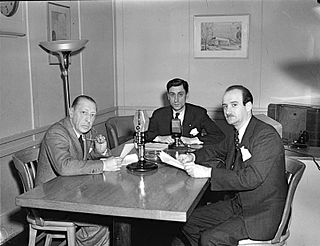 W
WThe Symphony in Three Movements is a work by Russian expatriate composer Igor Stravinsky. Stravinsky wrote the symphony from 1942–45 on commission by the Philharmonic Symphony Society of New York. It was premièred by the New York Philharmonic Orchestra under Stravinsky on January 24, 1946.
 W
WThe Asrael Symphony for large orchestra in C minor, Op. 27 (1905–1906), is a Czech symphony composed by Josef Suk. Suk wrote the work in memory of his father-in-law and teacher, Antonín Dvořák, and his wife Otilie Suková.
 W
WThe Symphony No. 1 is a four-movement orchestral composition by the Finnish composer Uuno Klami, who wrote the piece from 1937 to 1938. Georg Schnéevoigt and the Helsinki Philharmonic Orchestra premiered the work on 5 May 1939; later that year, Klami enlisted in the Finnish military and fought against the Soviet Union in the Winter War.
 W
WThe Symphony No. 2 is a four-movement orchestral composition by the Finnish composer Uuno Klami, who wrote the piece from in 1945; it is the final of Klami's two numbered symphonies. Toivo Haapanen and the Helsinki Philharmonic Orchestra premiered the work at the Helsinki Conservatory on 15 December 1946.
 W
WThe Symphony of Psalms is a choral symphony in three movements composed by Igor Stravinsky in 1930 during his neoclassical period. The work was commissioned by Serge Koussevitzky to celebrate the 50th anniversary of the Boston Symphony Orchestra. The symphony derives its name from the use of Psalm texts in the choral parts.
 W
WThe Symphony No. 2 by the British composer Michael Tippett was completed in 1957.
 W
WStories of the Danube is a symphony by Joe Zawinul, which was commissioned by the Brucknerhaus, Linz. It was first performed as part of the Linzer Klangwolke, for the opening of the 1993 Bruckner Festival in Linz, on September 12. In its seven movements, the symphony traces the course of the Danube from Donaueschingen through various countries ending at the Black Sea.